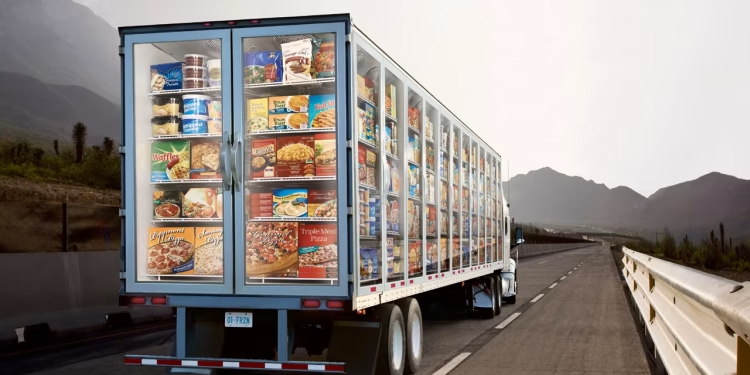By Eva Richardson | The Logistic News
April 9, 2025
With seafood consumption on the rise and global supply chains tightening around perishables, the fish logistics market is set to experience unprecedented growth. According to industry forecasts, the sector is expected to expand significantly by 2032, driven by demand for efficient, temperature-controlled transportation and traceability across the seafood supply chain.
Refrigerated Efficiency Meets Rising Demand
As consumers around the world increasingly adopt healthier diets rich in protein, the appetite for seafood is surging—particularly in urban centers. This trend, coupled with the globalization of seafood sourcing and distribution, places immense pressure on cold chain logistics.
“Freshness isn’t just a luxury—it’s a guarantee in seafood logistics,” says Thomas Menon, a cold-chain logistics consultant. “With technology improving and retail expectations rising, fish logistics is now about real-time control and sustainability.”
Segmentation: From Fry Transport to Ornamental Trade
The fish logistics market is highly specialized. It encompasses services such as:
- Fry and adult fish transport for aquaculture farms and breeders
- Processed and fresh seafood transport to restaurants and retail chains
- Ornamental fish logistics for pet supply retailers
Each sub-sector presents unique handling, packaging, and transportation challenges—requiring tailored vehicles, oxygenation systems, and temperature monitoring.
Tech Innovation: The Cool Factor
Technological advancements are redefining standards. Cold-chain monitoring tools using IoT, AI-based route optimization, and smart packaging solutions are helping reduce spoilage and extend shelf life.
Fleet innovation is also playing a role. From reefer trucks to containerized air freight units, logistics providers are investing in temperature consistency and energy efficiency.
Asia-Pacific: The Growth Powerhouse
Asia-Pacific, particularly China, Vietnam, and India, is not only the largest producer but also the fastest-growing consumer of seafood. With expanding middle-class demand and advanced aquaculture networks, the region is driving volume and innovation.
Major logistics companies have begun setting up hubs in coastal economic zones to facilitate faster cold storage and customs processing.
Challenges: Regulation, Cost, and Infrastructure
Despite promising trends, barriers remain:
- Infrastructure Gaps: In emerging markets, poor cold-chain connectivity leads to spoilage and delays.
- High Operating Costs: Refrigerated transport and quality control systems require heavy upfront investment.
- Complex Regulations: Export-import documentation and health compliance for seafood vary significantly across countries.
Outlook: A Market on the Hook for Growth
With increasing seafood exports, sustainability awareness, and supply chain digitization, fish logistics is evolving from a niche to a critical link in global food security.
Strategic collaborations between aquaculture businesses, cold chain tech providers, and logistics firms will be crucial to scaling efficiently.
Conclusion: Hooked on the Future
The fish logistics sector is no longer operating in the shadows of traditional food distribution. It is becoming a key component in ensuring global access to safe, fresh, and responsibly sourced seafood. For logistics players ready to innovate, the opportunity is vast—and already biting.
For deeper insights into food logistics, perishables transport, and global cold chain trends, follow Eva Richardson and The Logistic News on Google News and LinkedIn.























